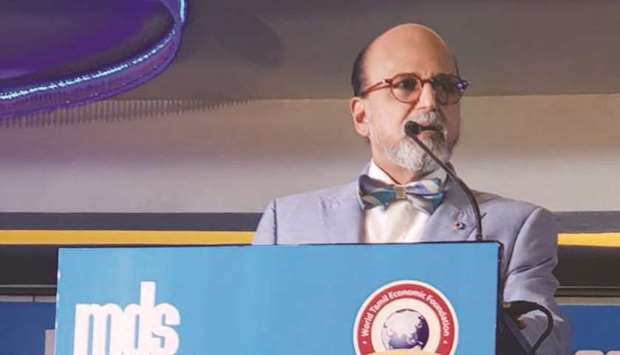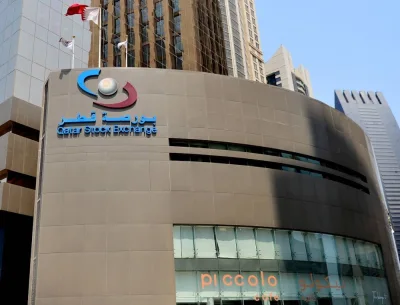The global economy is expected to witness consolidation next year, according to Doha Bank CEO Dr R Seetharaman, who spoke at the ‘Chennai Global Economic Summit 2019’ and ‘6th World Tamil Conference’ held recently in Chennai, India.
Seetharaman said, “Global expansion is a fragile one, with growth weakening in the US, China, the euro area, and Japan offset by a handful of smaller emerging markets – Brazil, India, and South Africa, rebounding from tepid growth in 2019. This coming 2020 will be a year of consolidation.
“The macro-environment is looking up in 2020, including the phase one US-China trade deal, improving economic data, and the effects of global monetary policy easing across the globe. The looming recession risk is much lower at the end of 2019 than mid-year, but any breakdown in the US-China trade talks could change everything.
He added: “Recession fears were at their highest levels in mid-2019, when the yield curve inverted for the first time since 2008. We are likely to see some stabilisation next year as the impact of monetary policy easing around the world is felt. We saw a number of dovish surprises from central banks globally in 2019.”
Seetharaman also said India’s economy grew at its slowest pace in more than six years in the July-September period, down to 4.5% from 7.0% a year ago. He said India is expected to take steps to reverse the economic slowdown of an economy that has been one of the engines of global growth.
The key happening segments in India include an attractive investment destination, e-commerce market, largest road network, food production, domestic air growth, and largest startup eco-system, he said.
“The key expectations from India by 2025 include 200km National Highway road network, $3tn consumer market, 550mn middleclass population, 100 smart cities, and 175GW renewable energy to be generated.
“The key enablers for India’s growth include improving ease of business, open FDI policies, streamlined tax regime, robust and resilient financial markets and digital first economy. On the whole, India is heading in the right direction,” Seetharaman stressed.
He said bilateral trade between Qatar and India in 2018-2019 is above $12bn. Qatar’s major exports to India include petrochemicals, LNG, fertilisers, sulphur and iron pyrites, while Qatar’s major imports from India include accessories, man-made yarn, fabrics, made-ups, cotton yarn, transport equipment, machinery and instruments, manufacture of metals, ores, and minerals, among others.
“Qatar Petroleum has announced further increase in the capacity of Qatar’s LNG expansion project by adding a fourth liquefaction train to raise the country’s liquefied natural gas capacity to 126mn by 2027. Qatar and India can look forward to enhance their collaborations in LNG segment,” he said.
Seetharaman also highlighted on Tamil Nadu’s economy, saying in 2018-2019 it recorded an economic growth rate of 8.17% despite a deficit northeast monsoon and cyclone Gaja that devastated parts of the state.
For the second year in succession, the primary sector did far better than the secondary and services sectors – close to a double digit growth of 9.9%. The secondary and services sectors registered growth rates of 6.59% and 8.24%, respectively, he said.
“Tamil Nadu has a diversified manufacturing sector and features among the leading states in several industries like automobiles and components, engineering, pharma, garments and textile products, leather products, chemicals and plastics, among others. Sixteen US-based companies have committed to invest a huge sum in Tamil Nadu and provide job opportunities for nearly 20,000 people.

Doha Bank CEO Dr R Seetharaman speaking at the ‘Chennai Global Economic Summit 2019’ and ‘6th World Tamil Conference’ held recently in Chennai, India.


